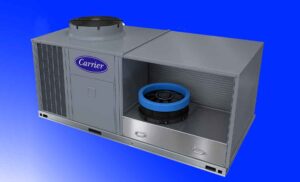US EPA moves to initiate HFC phase down
3rd May 2021
USA: The US EPA has released a proposed rulemaking to establish an allocation system to decrease the production and import of HFCs by 85% over the next 15 years.
The proposed rule is the first step to implement the American Innovation and Manufacturing (AIM) Act of 2020, the new climate law that sets the US on course for compliance with the international HFC phase down under the Kigali Amendment.
The AIM Act directs the EPA to sharply reduce production and consumption of HFCs by using an allowance allocation and trading programme. The proposals list 18 of the higher GWP HFCs including R134a, R32, R125, R143a, R23, R152, and R152a.
“With this proposal, EPA is taking another significant step under President Biden’s ambitious agenda to address the climate crisis,” said EPA administrator Michael S Regan. “By phasing down HFCs, which can be hundreds to thousands of times more powerful than carbon dioxide at warming the planet, EPA is taking a major action to help keep global temperature rise in check. The phase down of HFCs is also widely supported by the business community, as it will help promote American leadership in innovation and manufacturing of new climate-safe products. Put simply, this action is good for our planet and our economy.”
The speed of reaction by the Biden administration has shocked even the environmental groups. Speaking on behalf of the Environmental Investigation Agency, climate campaign lead Avipsa Mahapatra commented: “We are incredibly excited by the swiftness with which EPA is setting up a framework to implement landmark climate regulation to eliminate HFCs that will achieve emission reductions of 4.7 billion metric tons of CO2e by 2050.”
Phase down
The phase down will be based on a baseline figure yet to be established by the EPA but will be derived from historical HFC production and consumption data. From this, the EPA will establish yearly allocation allowances.
It is intended that the production and consumption phase down will be effective from January 1, 2022, under the following timetable: 2022 to 2023 90%; 2024 to 2028 60%; 2029 to 2033 30%; 2034 to 2035 20%; 2036 and thereafter 15%.
The EPA is also proposing a ban on on the use of non-refillable, disposable cylinders, bringing it into line with similar bans on this type of cylinder in other leading countries, including the UK, EU, Australia, India, and Canada, have banned disposable cylinders in their countries.
“The AIM Act is one of the most significant environmental policy laws passed in recent years. This HFC allocation rule is key to achieving an orderly HFC phase down in the United States, creating a uniform federal approach to this effort, and capturing significant projected environmental and economic benefits,” said Karen Meyers, vice president of the Rheem Manufacturing Company, and chairman of the Alliance for Responsible Atmospheric Policy.
Welcoming the move by the EPA, US Climate Alliance executive director Julie Cerqueira “Alliance states have been leading the charge in reducing HFC emissions in recent years and now have a strong federal partner in this push. It’s a win for jobs, a win for our economy and it will help us achieve our bold state and federal climate goals.”
The AIM Act is among the most significant environmental laws from the US Congress in recent years – co-sponsored and passed with strong, bipartisan support. Backed by a broad coalition of industry and environmental groups, it provides regulatory certainty across the United States for phasing down HFCs and ushers in the use of more climate friendly and efficient alternatives that will save consumers money while improving the environment.
The proposed rule can be accessed here.
Related stories:
US joins China in Kigali pledge – 18 April 2021
CHINA/USA: The US and China have both committed to implementing the Kigali Amendment to the Montreal Protocol and phase down the production and consumption of HFCs. Read more…
Biden orders US ratification of Kigali – 27 January 2021
USA: US President Joe Biden has today issued an executive order seeking the US Senate’s consent to ratify the Kigali Amendment to phase down HFC refrigerants. Read more…
US groups celebrate HFC phasedown bill – 23 December 2020
USA: Industry and green groups have applauded the passage through Congress of a bill to phase down HFC refrigerants. Read more…
USA a step closer to HFC phase down – 12 September 2020
USA: The USA moved a step closer to implementing an HFC phase down following a Senate committee agreement on a revised amendment to the American Energy Innovation Act. Read more…







